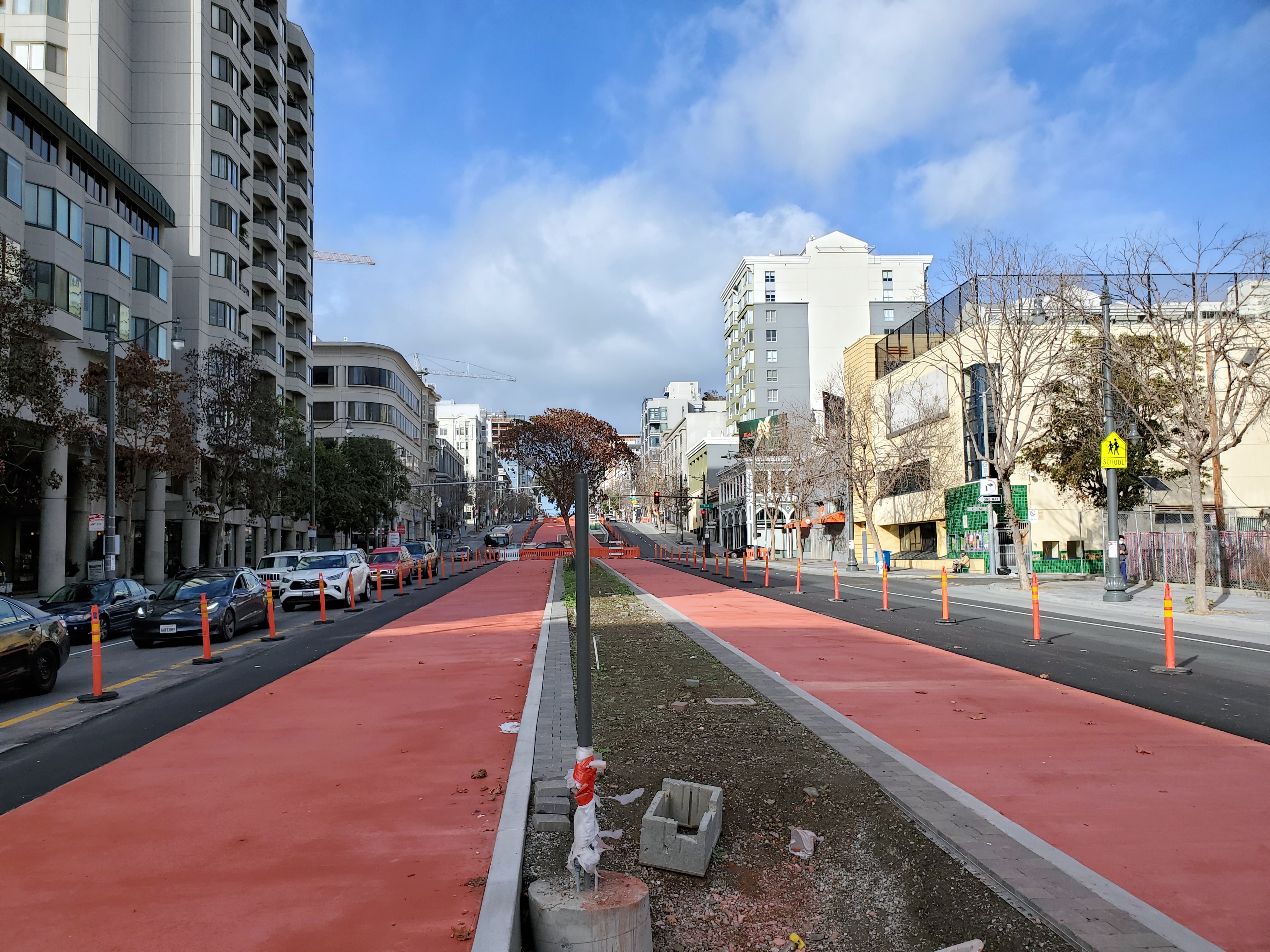“What’s going on with Van Ness Avenue?” is such a commonplace San Francisco question that no less than a civil grand jury formed to find out why the traffic-snarling roadwork on that corridor seems to have lasted forever.
A civil grand jury is a special body of SF citizens charged with auditing city government. Outcomes vary, but generally speaking it’s never a good sign to have a civil grand jury looking into you.
The grand jury report released this week titled “Van Ness Avenue: What Lies Beneath” calls the Van Ness project “a case study in how mistakes can compound,” and it only gets worse from there. Here’s some of the high-and-lowlights:
- In case anyone forgot, the Van Ness Improvement Project is meant to speed up bus traffic on the busy north-south route, and has been more than 25 years in the making. San Francisco voters originally approved the overhaul way back in 2003 off a proposal from 1995, although nothing broke ground until 2016.
- Originally, the Van Ness dig was to last about three years and wrap up in 2019. Anyone who has driven or walked along Van Ness lately knows that hasn’t happened: SFMTA now hopes to finish in early 2022, and the delays tacked an extra $37 million onto the budget, pushing the total cost up to $346 million.
- For years we’ve heard that the reason for all these delays is that contractors must reroute water and sewer lines under Van Ness with only bad maps and dated plans to guide them. The grand jury report deems this “technically true,” but points out that a lot of the problems could have been avoided with better planning and inspection ahead of time.
- For example, the city could have used tools like ground-penetrating radar sooner to search for utility lines in unexpected places, or in some cases just had someone walk along and do a visual inspection of the street that would have flagged problem spots.
- To avoid running into more unmarked utility pipes, contractors had to dig up sections of “virtually every block” to scout, and this stalled traffic all up and down Van Ness as well as stretched the project’s timeline and budget out like taffy.

Jurors ultimately conclude that these errors, among others, “have damaged the public’s confidence in SFMTA to keep its promises.” No kidding. You can read the full report here. SFMTA and any other public bodies cited will have 60 to 90 days to respond.
City Hall types and SF housing watchers alike should care quite a bit what happens on Van Ness Avenue, as the city has wanted for years to turn the area around the base of Van Ness into a nascent new neighborhood, approving several high-rise housing projects around it in recent years and plotting future infrastructure improvements.
Van Ness connects northern flanks of the city to West SoMa, another neighborhood that city planners hope to turn into a high-demand destination replete with new housing opportunities of its own. Rehabbing transit is supposed to be the first chapter in those designs–but the story so far reads like more of a cautionary tale.

